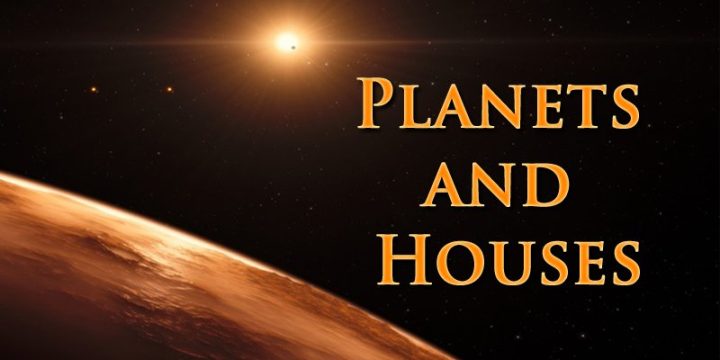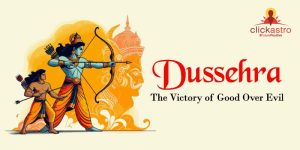Indian astrology is a complex and detailed science that studies the planets and stars and offers astute guidance on the possibilities inherent in a person’s future. As an ancient field of study, astrology has been offering people answers to their varied questions, since time immemorial. Even today, in a world driven by technology and innovation, astrology remains relevant and flexible as it has an extremely strong base and reasoning behind it. One of the important aspects of astrology is the relationship between planets and houses. Let us take a look at the various characteristics of the different planets and understand their significance in our daily lives.
Planets
In Hindu Astrology, there are nine planets or Grahas. These include Rahu and Ketu, which are astronomical points formed where the moon’s orbit intersects the apparent path of the Sun around the earth. Each planet is considered to be having masculine, feminine or neutral characteristics. The planet
Ravi or Sun is considered masculine, while Chandra or Moon is feminine and Kuja or Mars is masculine. Going ahead, Budha or Mercury is a neutral planet and
Guru or Jupiter depicts masculine properties. The next planet is Shukra or Venus, and she is considered feminine in nature, followed by
Sani or Saturn, which is a neutral planet. Then we have Rahu and Ketu, also known as Dragon Head and Dragon Tail, respectively, and they are feminine and neutral by nature.
Planets and their equivalents in English
| Graha |
English Name |
Sex |
| Ravi |
Sun |
Masculine |
| Chandra |
Moon |
Feminine |
| Kuja |
Mars |
Masculine |
| Budha |
Mercury |
Neutral |
| Guru |
Jupiter |
Masculine |
| Shukra |
Venus |
Feminine |
| Sani |
Saturn |
Neutral |
| Rahu |
Dragon Head |
Feminine |
| Ketu |
Dragon Tail |
Neutral |
Rahu and Ketu
The Moon’s apparent path intersects the ellipse obliquely at two points called the nodes. The point where the Moon crosses the ecliptic from south to north is called the ascending node or Rahu, where it crosses the ecliptic from north to south is called descending node or Ketu. These two points are 180 degrees apart and their movement is constantly retrograde, meaning, against the normal direction of the movement of planets. Rahu and Ketu are given special status and considered as planets in Indian astrology. Rahu and Ketu take approximately eighteen years and ten days to complete one round of the zodiac.
Zodiac
The
Zodiac is a band 18 degrees wide and placed obliquely to the equator. This band can be imagined running around the earth in an east-west direction. Groups of stars can be located along this imaginary belt. This belt is divided into twelve equal parts called Rasi. It is also divided into 27 parts and each part named after a star or group of stars located in the division
Houses
When a zodiac is divided into twelve equal parts, each such part has an extension of 30 degrees of arc. Such a division is called a sign or Rasi. There are
12 houses of Rasi’s and these are Mesha or Aries, Vrishabha, also known as Taurus, Mithuna or Gemini, Karkata or Cancer, Simha or Leo, Kanya, also known as Virgo, Tula or Libra, Vrischika, also called Scorpio in the Western system, Dhanu or Sagittarius, Makara or Capricorn, Kumbha, also known as Aquarius and finally, Meena or Pisces.
There are 12 houses of Rasi’s
| No. |
Indian System |
Western System |
| 1 |
Mesha |
Aries |
| 2 |
Vrishabha |
Taurus |
| 3 |
Mithuna |
Gemini |
| 4 |
Karkata |
Cancer |
| 5 |
Simha |
Leo |
| 6 |
Kanya |
Virgo |
| 7 |
Tula |
Libra |
| 8 |
Vrischika |
Scorpio |
| 9 |
Dhanu |
Sagittarius |
| 10 |
Makara |
Capricorn |
| 11 |
Kumbha |
Aquarius |
| 12 |
Meena |
Pisces |
Lords of Houses
Now, in Indian astrology, each of these Rasis have a planet assigned to it, as Lord of the House. Let us take a look at which planet is the lord of your rasi. If you are a Mesha, your lord is Mangal or Kuja or Mars, and if you belong to the Vrishabha rasi, your lord is Venus. Next, if you belong to the Mithuna rasi, then your house is ruled by Budha or Mercury and if you are a Karkata rasi, then your ruling planet is the Moon. If you belong to Simha rasi, the Sun or Surya is your lord and Budha or Mercury rules the Kanya rasi. For Tula rasi, Shukra or Venus is the lord and for Vrischika, Mars is the ruling planet. The Dhanu rasi is ruled by Guru while if you belong to the Makara or Kumbha rasi, then your lord of the house is Sani or Saturn. Finally, if you belong to the Meena rasi, you will be ruled by Guru.
| No. |
Lords of 12 Houses |
| 1 |
Mesha |
Mangal or Kuja (Mars) |
| 2 |
Vrishabha |
Shukra (Venus) |
| 3 |
Mithuna |
Budha (Mercury) |
| 4 |
Karkata |
Chandra (Moon) |
| 5 |
Simha |
Surya (The Sun) |
| 6 |
Kanya |
Budha (Mercury) |
| 7 |
Tula |
Shukra(Venus) |
| 8 |
Vrischika |
Kuja(Mars) |
| 9 |
Dhanu |
Guru(Jupiter) |
| 10 |
Makara |
Sani(Saturn) |
| 11 |
Kumbha |
Sani(Saturn) |
| 12 |
Meena |
Guru (Jupiter) |
Exalted houses of Planets
Each planet has a point in the zodiac where it attains maximum strength. The houses where they have the maximum strength are called the houses of exaltation. Let us take a look at the exalted houses of the different planets. For planet Ravi, the exalted house is Mesha, for Chandra, the house is Vrishabha and for Kuja, Makara is the exalted house. The planet Budha is exalted in the house of Kanya, while Simha is exalted in Karkata and Shukra is exalted in Meena. Finally, the planet Sani is exalted in the house of Tula.
Planets and their exalted houses (Uchacha)
| Exaltation |
| 1 |
Ravi |
– |
Mesha |
| 2 |
Chandra |
– |
Vrishabha |
| 3 |
Kuja |
– |
Makara |
| 4 |
Budha |
– |
Kanya |
| 5 |
Simha |
– |
Karkata |
| 6 |
Shukra |
– |
Meena |
| 7 |
Sani |
– |
Tula |
Debilitated houses of planets
Just as there are houses in which the planets are exalted, so also, there are houses wherein planets are debilitated. Each planet has a point in the zodiac, where it has the minimum strength. The houses where the planets have the minimum strength are called the houses of debilitation. For planet Ravi, Tula is the house of debilitation and for Chandra, it is Vrischika. The planet Kuja finds itself debilitated in the house of Karkata, while Budha is weak in the Meena rasi. Simha is debilitated in the Makara rasi and Shukra finds itself weak in Kanya. Lastly, planet Sani is weak in the house of Mesha.
| Debilitated houses of Planets |
| 1 |
Ravi |
– |
Tula |
| 2 |
Chandra |
– |
Vrischika |
| 3 |
Kuja |
– |
Karkata |
| 4 |
Budha |
– |
Meena |
| 5 |
Simha |
– |
Makara |
| 6 |
Shukra |
– |
Kanya |
| 7 |
Sani |
– |
Mesha |
Planetary relationship
Each planet considers another planet as a friend, enemy or equal. Some relationships are not mutual, for example, while one planet considers another as a friend, the second planet, in turn, may not see the first one as a friend. Mercury and Moon are examples. For the planet Sun, planets Moon, Mars, and Jupiter are friends, while Mercury is considered an equal and Venus, Sani, and Rahu fall in the category of enemies. For the Moon, Sun and Mercury are her friends while Mars, Jupiter, Venus, and Saturn are known as equals and Rahu is an enemy. Similarly, for the planet Mars, Sun, Moon, and Jupiter are its friends, while Venus, and Saturn are equals and Mercury and Rahu are enemies.
For planet Mercury, the planets Sun, Venus, and Rahu are friends, Mars, Jupiter, and Saturn are equals and Moon is the enemy. Moving on to Jupiter, the Sun, Moon, and Mars are his friends and Saturn, and Rahu are equals. Mercury and Venus are the enemies. For Venus, Mercury, Saturn, and Rahu are friends, Jupiter, and Mars are equals and the Sun and the Moon act as enemies. Finally, for Saturn, friends are Mercury, Venus, Rahu, Jupiter is an equal and Sun, Moon, Mars are enemies, for Rahu, friends include Mercury, Venus, Saturn, equal is Jupiter and Sun, Moon, and Mars are the enemies and, for Ketu, Mercury, Venus, Saturn, Rahu are friends, Jupiter is an equal and Sun, Moon, Mars are enemies.
| Planets |
Friends |
Equals |
Enemies |
| Sun |
Moon, Mars, Jupiter |
Mercury |
Venus, Sani, Rahu |
| Moon |
Sun, Mercury |
Mars, Jupiter, Venus, Saturn |
Rahu |
| Mars |
Sun, Moon, Jupiter |
Venus, Saturn |
Mercury, Rahu |
| Mercury |
Sun, Venus, Rahu |
Mars, Jupiter, Saturn |
Moon |
| Jupiter |
Sun, Moon, Mars |
Saturn, Rahu |
Mercury, Venus |
| Venus |
Mercury, Saturn, Rahu |
Jupiter, Mars |
Sun, Moon |
| Saturn |
Mercury, Venus, Rahu |
Jupiter |
Sun, Moon, Mars |
| Rahu |
Mercury, Venus, Saturn |
Jupiter |
Sun, Moon, Mars |
| Ketu |
Mercury, Venus, Saturn, Rahu |
Jupiter |
Sun, Moon, Mars |
Planets and gemstones
Each planet has a gem associated with it. The nine stones corresponding to the nine planets are called the Navaratna group of stones. These can be classified as indicated here –
| Planet |
Gem Stone |
| Ravi |
Ruby |
| Chandra |
Pearl |
| Kuja |
Coral |
| Budha |
Emerald |
| Guru |
Pushyaraga (Yellow Sapphire) |
| Shukra |
Diamond |
| Saturn |
Blue Sapphire |
| Rahu |
Gomed |
| Ketu |
Cat’s eye |
Planets and their colours
Every planet has a colour associated with it. For instance, red is the colour for Ravi and Kuja, white for Chandra and Shukra, green for Budha, yellow for Guru, blue for Saturn and a smokey shade for Rahu and Ketu. Each of these colours are indicative of the colour of the planet.
| Planet |
Gem Stone |
| Ravi |
Red |
| Chandra |
White |
| Kuja |
Red |
| Budha |
Green |
| Guru |
Yellow |
| Shukra |
White |
| Saturn |
Blue |
| Rahu |
Smoke |
| Ketu |
Smoke |
Periods of stay of each planet in each sign
The planets are in constant movement, and, therefore, they have a specific period of stay in each house or sign. This is depicted below –
| Planet |
Period of Stay |
| Sun |
30 days |
| Moon |
2 1/4 days |
| Mars |
45 days |
| Mercury |
30 days |
| Jupiter |
1 year |
| Venus |
30 days |
| Saturn |
2 years and 6 months |
| Rahu |
1 year and 6 months |
| Ketu |
1 year and 6 months |
Planets and their elements
Indian astrology attributes various characters to planets and elements are one such characteristic. Let us take a look at the different planets and their elements –
| Planets and their elements |
| Mercury stands for Earthly element |
| Sun Stands for Fiery element |
| Saturn stands for Airy element |
| Jupiter stands for Ethereal element |
| Venus & Moon stands for Watery element |
Types of houses
Houses are also divided into three types, known as Chara or movable house, fixed or Sthira house and common or Dwiswabhava. These are as depicted here –
| Movable (Chara) |
Fixed (Sthira) |
Common (Dwiswabhava) |
| Mesha |
Vrishabha |
Mithuna |
| Karkata |
Simha |
Kanya |
| Tula |
Vrischika |
Dhanu |
| Makara |
Kumbha |
Meena |
Planets are also categorised as natural benefics, which include Jupiter, Mercury, Venus and Waxing Moon, and natural malefics, including Saturn, Mars, Rahu, Ketu and Sun.
Characteristics Associated with Planets
Planets are associated with colour, metal, elements, grains, seasons etc. Also, they are believed to belong to certain caste and sex. These characteristics and associations are given in a table below.
| Character |
Sun |
Moon |
Mars |
Mercury |
| Colour |
Copper |
White |
Red |
Green |
| Nature |
Sathwa |
Sathwa |
Thamas |
Rajas |
| Sex |
Male |
Female |
Male |
Eunuch(Female) |
| Caste |
Kshtriya |
Vysya |
Kshtriya |
Sudra |
| Element |
Fire |
Water |
Fire |
Earth |
| Diety |
Agni |
Varuna |
Subramanya |
Vishnu |
| Garment |
Thick |
New |
HalfBurnt |
Wet |
| Metal/material |
Copper |
Gems |
Gold |
Brass |
| Parts |
Bones |
Blood |
Marrow |
Skin |
| Grains |
Wheat |
Paddy |
Lentil |
GreenGram |
| Seasons |
Summer |
Winter |
Summer |
Autumn |
| Taste |
Pungent |
Salt |
Acidity |
Mixed |
| Residence |
Place of worship |
Springs |
Fire |
Play-ground |
| Temperament |
Bilious |
Phlegmatic |
Bilious |
Mixed |
| Character |
Jupiter |
Venus |
Saturn |
| Color |
Mixed Gold&Silver |
White/Yellow |
Blue/Black |
| Nature |
Sathwa |
Rajas |
Thamas |
| Sex |
Male |
Female |
Eunuch (Female) |
| Caste |
Brahman |
Brahman |
Chandala |
| Element |
Ether |
Water |
Air |
| Diety |
Indra |
Indrani |
Brahma |
| Garment |
Shabby |
Strong |
Rag |
| Metal/material |
Silver |
Diamond(Pearl) |
Iron(Lead) |
| Parts |
Flesh&Brain |
Semen |
Muscles |
| Grains |
BengalGram |
Beans |
Sesamin |
| Seasons |
Snow |
Spring |
All Seasons |
| Taste |
Sweet&Cool |
Sour |
Bitter & Astringent |
| Residence |
Store-house |
Bed-Chamber |
Dustbin |
| Temperament |
Phlegmatic |
Windy |
|
| &Phlegmatic |
Windy |
|
|









